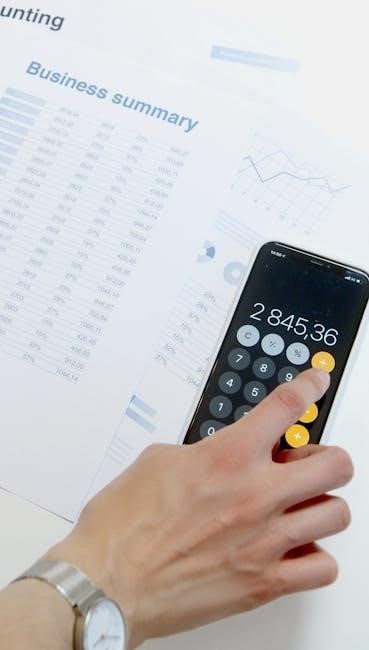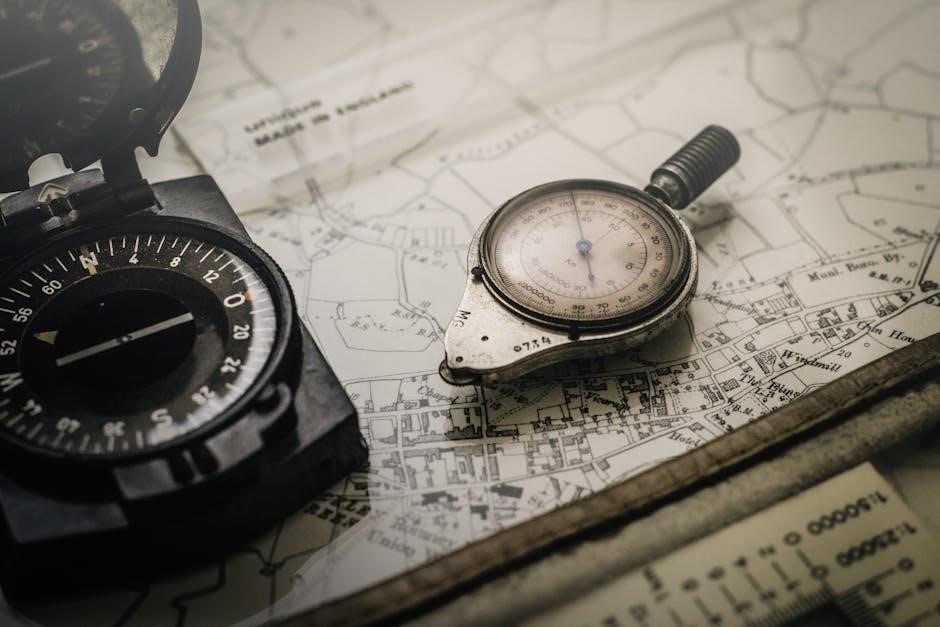The clarinet fingering chart pdf is a valuable resource for musicians, providing a comprehensive guide to finger placements and key combinations, available for download in various digital formats, including pdf files, online.
Overview of the Clarinet Instrument
The clarinet is a woodwind instrument with a rich history, known for its distinctive sound and versatility in various musical genres. It is a single-reed instrument, meaning it produces sound when air is blown through a reed, causing a vibration in the instrument’s body. The clarinet is typically made of wood, plastic, or other materials, and consists of a mouthpiece, barrel, upper joint, lower joint, and bell. It is played by covering and uncovering the holes and keys with the fingers, allowing for a wide range of notes and dynamics. The clarinet is a popular instrument in many types of music, including classical, jazz, and folk, and is often used in solo and ensemble settings. With its unique sound and technical challenges, the clarinet is an instrument that requires dedication and practice to master, making it a rewarding instrument for musicians to learn and play. Musical expressions and techniques are also achievable with the clarinet.
Importance of Clarinet Fingering Chart
The clarinet fingering chart is a crucial tool for clarinet players, as it provides a visual representation of the fingerings required to produce different notes on the instrument. This chart is essential for learning and mastering the clarinet, as it helps players to develop proper finger technique and hand position. By using a fingering chart, players can quickly identify the correct fingerings for each note, allowing them to focus on other aspects of their playing, such as tone, pitch, and rhythm. The chart also helps to prevent finger confusion and mistakes, making it an invaluable resource for players of all levels. Additionally, the chart can be used to explore alternative fingerings and techniques, allowing players to expand their musical expression and versatility. Overall, the clarinet fingering chart is a fundamental resource for any clarinet player, and is an essential part of the learning and practice process. Proper use of the chart can lead to improved playing and a deeper understanding of the instrument.

Understanding Clarinet Key Systems
Clarinet key systems vary, with the Boehm system being most common, using specific keys and fingerings.
Boehm System
The Boehm system is a widely used clarinet key system, known for its complexity and versatility. This system was developed by Theobald Boehm, a German instrument maker, and is characterized by its use of rings and keys to cover the tone holes. The Boehm system is commonly used in orchestral and chamber music settings, and is particularly well-suited for playing complex melodies and harmonies. One of the key features of the Boehm system is its use of a register key, which allows the player to switch between different registers of the instrument. The Boehm system also includes a number of alternative fingerings, which can be used to produce different tonal colors and dynamics. Overall, the Boehm system is a powerful and expressive key system that is well-suited for a wide range of musical applications, and is an important part of the clarinet fingering chart pdf. The system is used by many professional clarinetists and is considered a standard in the music industry.

Side Keys and Trill Fingerings
The side keys and trill fingerings are an essential part of the clarinet fingering chart pdf, allowing players to produce a wide range of tonal colors and dynamics. The third side key, in particular, is often used in combination with the fourth side key as a trill fingering or an alternate fingering to produce a clearer tone. This key is also used to facilitate smooth transitions between notes and to add ornamentation to melodies. The trill fingerings are used to produce a rapid, slurred alternation between two notes, adding a decorative element to the music. The side keys and trill fingerings require precise finger placement and coordination, making them a challenging but rewarding aspect of clarinet playing. By mastering these fingerings, players can add depth and complexity to their playing, and explore the full expressive potential of the clarinet. The clarinet fingering chart pdf provides a comprehensive guide to these fingerings, helping players to develop their skills and improve their overall technique.

Clarinet Fingering Chart PDF Downloads
Download clarinet fingering chart pdf files online, available in digital formats, for convenient access and practice, helping musicians improve skills and technique, with easy access online, every day, always.
Free PDF Downloads
Free clarinet fingering chart pdf downloads are available online, providing musicians with a valuable resource to improve their skills and technique. These downloads can be accessed from various websites, allowing users to print or save the charts for future reference. The pdf format is convenient and easily accessible, making it a popular choice among musicians. Many websites offer free downloads of clarinet fingering charts, catering to different levels of expertise, from beginner to advanced. The charts typically include fingerings for various notes, alternate fingerings, and trill fingerings, helping musicians to develop their playing style and technique. Additionally, some websites may offer interactive fingering charts, allowing users to explore different fingerings and hear the corresponding sounds. Overall, free pdf downloads of clarinet fingering charts are a useful tool for musicians, providing a comprehensive guide to finger placements and key combinations, and helping to improve their overall performance. With the availability of these free downloads, musicians can easily access and utilize the charts, enhancing their musical experience.
Digital and Physical Formats
Clarinet fingering charts are available in both digital and physical formats, catering to different preferences and needs. The digital format, typically in pdf, can be easily downloaded and accessed on various devices, such as computers, tablets, and smartphones. This format is convenient for musicians who prefer to have instant access to the charts and can easily zoom in and out to view the fingerings. On the other hand, physical formats, such as printed books or posters, provide a tactile experience and can be easily referenced during practice sessions. Many musicians prefer to have a physical copy of the chart, as it allows them to mark important notes and fingerings. Both digital and physical formats have their advantages, and musicians can choose the one that suits their learning style and preferences. The availability of both formats ensures that musicians can access the charts in a way that is comfortable and convenient for them, enhancing their learning experience. Overall, the variety of formats provides flexibility and convenience for musicians.

Additional Resources for Clarinet Players
Musicians can access online tutorials, videos, and forums for further guidance and support, enhancing their clarinet playing skills and knowledge effectively online always.
Trill Exercises and Key Diagrams
Trill exercises are an essential part of clarinet playing, helping to improve finger dexterity and overall technique. Key diagrams provide a visual representation of the clarinet’s key system, making it easier for musicians to understand and navigate. These diagrams typically include notes and fingerings for different registers, as well as trill fingerings and alternate fingerings. By practicing trill exercises and studying key diagrams, clarinet players can develop a deeper understanding of their instrument and improve their overall performance. Online resources and tutorials often include trill exercises and key diagrams, providing musicians with a wealth of information and guidance. Additionally, many clarinet method books and instructional materials include trill exercises and key diagrams, making it easy for musicians to find and practice this important aspect of clarinet playing. Overall, trill exercises and key diagrams are a crucial part of clarinet playing and should be practiced regularly.
Alternate Fingerings and Tone Modification
Alternate fingerings are an important aspect of clarinet playing, allowing musicians to modify the tone and pitch of their instrument. By using different fingerings, clarinet players can produce a wide range of tonal colors and dynamics, adding depth and expression to their music. Tone modification is also possible through the use of alternate fingerings, enabling musicians to adjust the pitch and intonation of their instrument to suit different musical contexts; Many clarinet fingering charts and method books include alternate fingerings and tone modification techniques, providing musicians with a wealth of information and guidance. Online resources and tutorials also offer a range of alternate fingerings and tone modification exercises, helping musicians to develop their skills and expand their musical possibilities. With practice and dedication, clarinet players can master the art of alternate fingerings and tone modification, taking their playing to new heights and exploring new musical possibilities. This technique is essential for advanced players.
